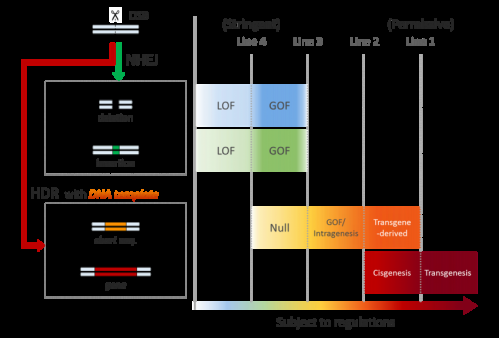Regulating genome-edited crops that aren't GMOs

A survey of rice, wheat, barley, fruit, and vegetable crops found that most mutants created by advanced genetic engineering techniques may be out of the scope of current genetically modified organism (GMO) regulations. In a review of these findings, published in the February 25 issue of the Cell Press journal Trends in Plant Science, two bioethicists from Hokkaido University propose new regulatory models for genome-edited crops and declare a call to action for clarifying the social issues associated with such genetically engineered crops.
"Modern genome editing technology has allowed for far more efficient gene modification, potentially impacting future agriculture," says Tetsuya Ishii, PhD, of Hokkaido University's Office of Health and Safety. "However, genome editing raises a regulatory issue by creating indistinct boundaries in GMO regulations because the advanced genetic engineering can, without introducing new genetic material, make a gene modification which is similar to a naturally occurring mutation."
Under current regulations, a GMO is a living organism that has been altered by a novel combination of genetic material, including the introduction of a transgene. Advanced genetic engineering technologies, including ZFN, TALEN, and CRISPR/Cas9, raise regulatory issues because they don't require transgenes to make alterations to the genome. They can simply pluck out a short DNA sequence or add a mutation to an existing gene.
"Genome editing technology is advancing rapidly; therefore it is timely to review the regulatory system for plant breeding by genome editing," says Dr. Ishii. "Moreover, we need to clarify the differences between older genetic engineering techniques and modern genome editing, and shed light on various issues towards social acceptance of genome edited crops."
In their study, Dr. Ishii and a member of his research staff, Motoko Araki, present four regulatory models in order to resolve the indistinct regulatory boundaries that genome editing has created in GMO regulations. They propose that the most stringent regulation (in which most of the mutants are subject to the regulations, whereas only a portion of deletion and insertion mutants fall outside the regulations) should be initially adopted and gradually relaxed because the cultivation and food consumption of genome-edited crops is likely to increase in the near future.
While policy-level discussions about the regulations of genome-edited organisms are slowly taking place around the world, according to Dr. Ishii, his study will serve as a basis for the conversation with regulatory agencies in the world as well as the Japanese Ministry of the Environment.
Journal information: Trends in Plant Science
Provided by Cell Press

















